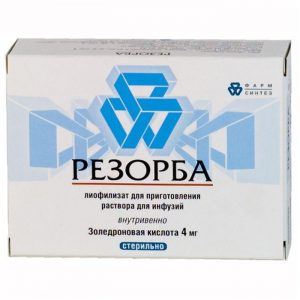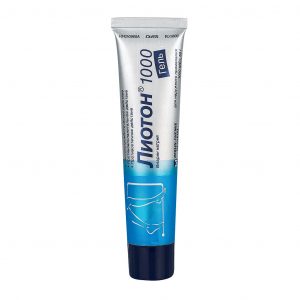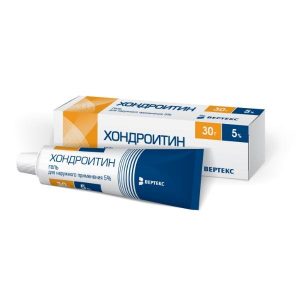Description
Latin name
Diclofenak
Release form
Rectal suppositories.
Packing
6 pcs
Pharmacological Action
Diclofenac is a non-steroidal anti-inflammatory drug (NSAID). It has anti-inflammatory, analgesic and antipyretic effects. It inhibits the COX enzyme in the cascade of arachidonic acid metabolism and disrupts the biosynthesis of prostaglandins.
Indications
Inflammatory and inflammation-activated degenerative forms of rheumatism:
– chronic polyarthritis
– ankylosing spondylitis (ankylosing spondylitis)
– arthrosis
– spondylarthrosis srdlbr, neuritis, neuritis, neuritis, neuralgia acute attacks of gout.
Rheumatic soft tissue lesions.
Painful swelling or inflammation after trauma or surgery.
Non-rheumatic inflammatory pain conditions.
Contraindications
– Quincke’s edema (hereditary or associated with the use of ACE inhibitors in history)
– severe impaired renal function
– severe hepatic impairment
– hyperkalemia
– bilateral stenosis of the renal artery or arterial arteries after kidney transplantation
– stenosis of the aortic orifice and similar obstructive changes that impede the outflow of blood from the left ventricle
– pregnancy
– lactation (thoracic feeding)
– hypersensitivity to the drug and other ACE inhibitors. aspirin triad)
– hypersensitivity to diclofenac and other components of the drug
– inflammation of the rectum – proctitis (suppositories)
Diclofenac is possible only under strict medical supervision after a careful assessment of the benefit / risk ratio in the following conditions: congenital hematopoiesis (induced porphyria) ) systemic lupus erythematosus and other systemic diseases of the connective tissue the presence of complaints about the function of the gastrointestinal tract, or with suspected gastric ulcer or 12 duodenal ulcer, as well as with erosive-ulcerative lesions (ulcerative colitis, Crohn’s disease) in patients with previous kidney disease and / or severe impaired liver function in severe arterial hypertension and / or heart failure in elderly patients immediately after surgery.
With great care and only under the direct supervision of a doctor, Diclofenac can be used in patients with bronchial asthma, allergic rhinitis, polyps of the nasal mucosa, as well as in chronic obstructive respiratory diseases and chronic respiratory infections due to the risk of an asthma attack, edema Quincke or urticaria.
Special instructions
Use with caution the drug simultaneously with other NSAIDs.
Use in pediatrics
If necessary, use the drug in the form of an ointment in children under the age of 6 years and requires the supervision of a doctor.
Effect on the ability to drive a car and control mechanisms
Due to the fact that when using the drug in high doses, side effects such as dizziness and a feeling of fatigue may develop, in some cases the ability to drive a car or other moving objects is impaired. These phenomena are amplified while taking alcohol.
Composition
1 suppository 100 mg contains dicl.
Dosage and administration
Rectally. Adults: 100 mg 1 time per day, 50 mg 2 times a day or 25 mg 3-4 times a day.
The maximum daily dose is 150 mg.
Children over 12 years old: 50 mg 1-2 times a day or 25 mg 2-3 times a day.
Side effects
Side effects depend on the individual sensitivity, the size of the dose used and the duration of treatment.
From the digestive system: nausea, vomiting, epigastric pain, anorexia, flatulence, constipation, gastritis up to erosive with bleeding, increased activity of transaminases, drug hepatitis, pancreatitis.
Urinary system: interstitial nephritis.
From the side of the central nervous system: headache, dizziness, disorientation, agitation, insomnia, irritability, fatigue, aseptic meningitis.
From the respiratory system: bronchospasm.
From the hemopoietic system: anemia, thrombocytopenia, leukopenia, agranulocytosis.
Dermatological reactions: exanthema, erythema, eczema, hyperemia, erythroderma, photosensitivity.
Allergic reactions: erythema multiforme, Lyell’s syndrome, Stevens-Johnson syndrome, anaphylactic reactions, including shock.
Drug interaction
With the simultaneous use of the drug Diclofenac with digoxin, with phenytoin or lithium drugs, it is possible to increase the plasma concentrations of these drugs with diuretics and antihypertensive drugs – it is possible to decrease the effect of these drugs with potassium-sparing diuretics – it is possible to develop hyperkalemia with acetisalicylic acid – a decrease in the concentration of diclofenac in blood plasma and an increased risk of side effects.
Diclofenac may enhance the toxic effects of cyclosporine on the kidneys.
Diclofenk can cause hypo- or hyperglycemia, therefore, when used simultaneously with hypoglycemic agents, monitoring of blood glucose concentration is required.
When methotrexate is used within 24 hours before or after taking Diclofenac, an increase in the concentration of methotrexate and an increase in its toxic effect are possible.
With simultaneous use with anticoagulants, regular monitoring of blood coagulation is necessary.
Expiration
2 years.
active substance
Diclofenac
Pharmacy terms
Prescription
lekarstvennaja form
suppozytoryy rektaln e
Farmaprim, Moldova




